formerly eScholarship Editions


|
|
|
|
Your request for similar items found 20 book(s). | Modify Search | Displaying 1 - 20 of 20 book(s) | |
| 1. |  | Title: Politics and theater: the crisis of legitimacy in restoration France, 1815-1830 Author: Kroen, Sheryl 1961- Published: University of California Press, 2000 Subjects: History | European History | French Studies Publisher's Description: Moliére's anticlerical comedy Tartuffe is the unique prism through which Sheryl Kroen views postrevolutionary France in the years of the Restoration. Following the lead of the French men and women who turned to this play in the 1820s to make sense of their world, Kroen exposes the crisis of legitimacy defining the regime in these years and demonstrates how the people of the time made steps toward a democratic resolution to this crisis. Moving from the town squares, where state and ecclesiastical officials orchestrated their public spectacles in favor of the monarchy, to the theaters, where the French used Tartuffe to mock the restored monarch and the church, this cultural history of the Restoration offers a rich and colorful portrait of a period in which critical legacies of the revolutionary period were played out and cemented. While most historians have characterized the Restoration as a period of reaction and reversal, Kroen offers convincing evidence that the Restoration was a critical bridge between the emerging practices of the Old Regime, the Revolution, and the post-1830 politics of protest. She re-creates the atmosphere of Restoration France and at the same time brings major nineteenth-century themes into focus: memory and commemoration, public and private spheres, politics and religion, anticlericalism, and the formation of democratic ideologies and practices. [brief] Similar Items |
| 2. | 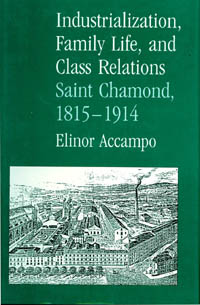 | Title: Industrialization, family life, and class relations: Saint Chamond, 1815-1914 Author: Accampo, Elinor Ann Published: University of California Press, 1989 Subjects: History | European History | Women's Studies Publisher's Description: In this provocative study, Elinor Accampo explores the interrelationship between the structure of work and strategies of family formation in Saint Chamond, a French city that underwent intensive industrialization during the nineteenth century. Through a detailed analysis of fertility, mortality, marriages, and migration, the author analyzes the ways in which the family responded to changes in the organization of work. In the first half of the nineteenth century work was in the home, and families tended to be large in order to meet the demand for workers. But by the 1860s the mechanization of labor had begun to separate family life and work life, fundamentally transforming the relationship between work and family and making the survival of the working-class family more difficult. Accampo argues that workers began to have smaller families much earlier than has previously been suggested, and she demonstrates that fertility declined for reasons unique to working-class conditions. This decline in family size, and the context in which it took place, provides fascinating new material for understanding the working class world and the dynamics of class relations. [brief] Similar Items |
| 3. | 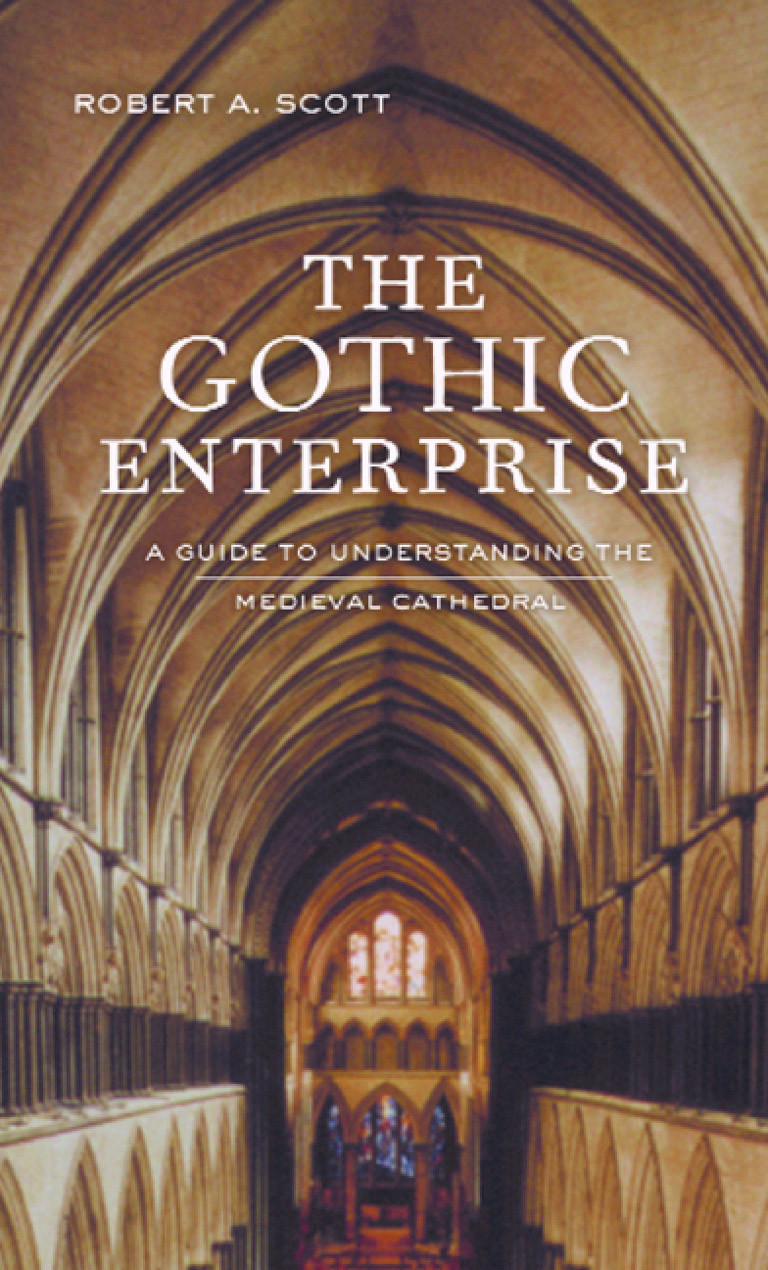 | Title: The Gothic enterprise: a guide to understanding the Medieval cathedral Author: Scott, Robert A 1935- Published: University of California Press, 2003 Subjects: Medieval Studies | Architecture | European Studies | Christianity | European History | Architectural History | Sociology | Sociology Publisher's Description: The great Gothic cathedrals of Europe are among the most astonishing achievements of Western culture. Evoking feelings of awe and humility, they make us want to understand what inspired the people who had the audacity to build them. This engrossing book surveys an era that has fired the historical imagination for centuries. In it Robert A. Scott explores why medieval people built Gothic cathedrals, how they built them, what conception of the divine lay behind their creation, and how religious and secular leaders used cathedrals for social and political purposes. As a traveler's companion or a rich source of knowledge for the armchair enthusiast, The Gothic Enterprise helps us understand how ordinary people managed such tremendous feats of physical and creative energy at a time when technology was rudimentary, famine and disease were rampant, the climate was often harsh, and communal life was unstable and incessantly violent. While most books about Gothic cathedrals focus on a particular building or on the cathedrals of a specific region, The Gothic Enterprise considers the idea of the cathedral as a humanly created space. Scott discusses why an impoverished people would commit so many social and personal resources to building something so physically stupendous and what this says about their ideas of the sacred, especially the vital role they ascribed to the divine as a protector against the dangers of everyday life. Scott's narrative offers a wealth of fascinating details concerning daily life during medieval times. The author describes the difficulties master-builders faced in scheduling construction that wouldn't be completed during their own lifetimes, how they managed without adequate numeric systems or paper on which to make detailed drawings, and how climate, natural disasters, wars, variations in the hours of daylight throughout the year, and the celebration of holy days affected the pace and timing of work. Scott also explains such things as the role of relics, the quarrying and transporting of stone, and the incessant conflict cathedral-building projects caused within their communities. Finally, by drawing comparisons between Gothic cathedrals and other monumental building projects, such as Stonehenge, Scott expands our understanding of the human impulses that shape our landscape. [brief] Similar Items |
| 4. | 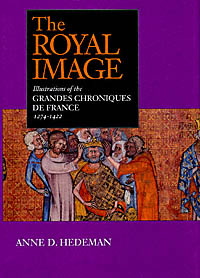 | Title: The royal image: illustrations of the Grandes chroniques de France, 1274-1422 Author: Hedeman, Anne Dawson Published: University of California Press, 1991 Subjects: Art | Art History | Medieval Studies | French Studies Publisher's Description: The Grandes Chroniques de France is a vernacular, frequently illustrated history of the medieval French monarchs. Originally describing the lives of the kings from their origins in Troy in 1274 to the reign of Philip Augustus, it was updated in several stages to the life of Charles VI. Copied and amended for a variety of royal and courtly patrons, approximately 130 of these manuscripts exist today. Anne Hedeman provides the first critical and comprehensive study of the chronicle's illustrations.Hedeman concentrates on the illustrations in twenty manuscripts, analyzing their artistic and cultural significance and offering new methods for studying illustrated manuscripts. She discusses the chronicle in relation to the political ideology of Louis IX, vernacular history, and the Latin chronicle tradition at Saint-Denis. Looking at the manuscripts of various periods, the author compares their representations of historical events, kingship, and individuals in and around the royal court. She also contrasts the styles of several authors and illustrators of the chronicle. The Royal Image includes a catalogue of over seventy-five illustrated manuscripts, and an appendix listing the artists. An additional appendix lists surviving manuscripts. [brief] Similar Items |
| 5. |  | Title: The Jews of modern France Author: Hyman, Paula 1946- Published: University of California Press, 1998 Subjects: Jewish Studies | French Studies | European Studies | History | European History | Judaism | Urban Studies Publisher's Description: The Jews of Modern France explores the endlessly complex encounter of France and its Jews from just before the Revolution to the eve of the twenty-first century. In the late eighteenth century, some forty thousand Jews lived in scattered communities on the peripheries of the French state, not considered French by others or by themselves. Two hundred years later, in 1989, France celebrated the anniversary of the Revolution with the largest, most vital Jewish population in western and central Europe.Paula Hyman looks closely at the period that began when France's Jews were offered citizenship during the Revolution. She shows how they and succeeding generations embraced the opportunities of integration and acculturation, redefined their identities, adapted their Judaism to the pragmatic and ideological demands of the time, and participated fully in French culture and politics. Within this same period, Jews in France fell victim to a secular political antisemitism that mocked the gains of emancipation, culminating first in the Dreyfus Affair and later in the murder of one-fourth of them in the Holocaust. Yet up to the present day, through successive waves of immigration, Jews have asserted the compatibility of their French identity with various versions of Jewish particularity, including Zionism. This remarkable view in microcosm of the modern Jewish experience will interest general readers and scholars alike. [brief] Similar Items |
| 6. | 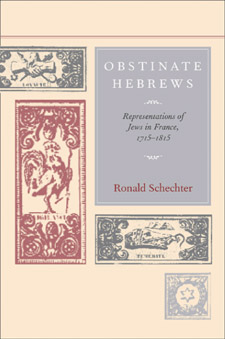 | Title: Obstinate Hebrews: representations of Jews in France, 1715-1815 Author: Schechter, Ronald Published: University of California Press, 2003 Subjects: History | European History | Jewish Studies | Intellectual History | French Studies Publisher's Description: Enlightenment writers, revolutionaries, and even Napoleon discussed and wrote about France's tiny Jewish population at great length. Why was there so much thinking about Jews when they were a minority of less than one percent and had little economic and virtually no political power? In this unusually wide-ranging study of representations of Jews in eighteenth-century France - both by Gentiles and Jews themselves - Ronald Schechteroffers fresh perspectives on the Enlightenment and French Revolution, on Jewish history, and on the nature of racism and intolerance. Informed by the latest historical scholarship and by the insights of cultural theory, Obstinate Hebrews is a fascinating tale of cultural appropriation cast in the light of modern society's preoccupation with the "other." Schechter argues that the French paid attention to the Jews because thinking about the Jews helped them reflect on general issues of the day. These included the role of tradition in religion, the perfectibility of human nature, national identity, and the nature of citizenship. In a conclusion comparing and contrasting the "Jewish question" in France with discourses about women, blacks, and Native Americans, Schechter provocatively widens his inquiry, calling for a more historically precise approach to these important questions of difference. [brief] Similar Items |
| 7. | 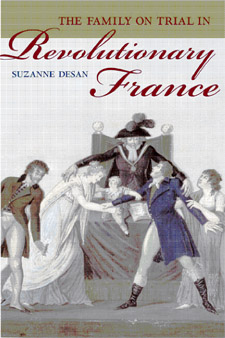 | Title: The family on trial in revolutionary France Author: Desan, Suzanne 1957- Published: University of California Press, 2004 Subjects: History | European Studies | French Studies | Women's Studies Publisher's Description: In a groundbreaking book that challenges many assumptions about gender and politics in the French Revolution, Suzanne Desan offers an insightful analysis of the ways the Revolution radically redefined the family and its internal dynamics. She shows how revolutionary politics and laws brought about a social revolution within households and created space for thousands of French women and men to reimagine their most intimate relationships. Families negotiated new social practices, including divorce, the reduction of paternal authority, egalitarian inheritance for sons and daughters alike, and the granting of civil rights to illegitimate children. Contrary to arguments that claim the Revolution bound women within a domestic sphere, The Family on Trial maintains that the new civil laws and gender politics offered many women unexpected opportunities to gain power, property, or independence. The family became a political arena, a practical terrain for creating the Republic in day-to-day life. From 1789, citizens across France - sons and daughters, unhappily married spouses and illegitimate children, pamphleteers and moralists, deputies and judges - all disputed how the family should be reformed to remake the new France. They debated how revolutionary ideals and institutions should transform the emotional bonds, gender dynamics, legal customs, and economic arrangements that structured the family. They asked how to bring the principles of liberty, equality, and regeneration into the home. And as French citizens confronted each other in the home, in court, and in print, they gradually negotiated new domestic practices that balanced Old Regime customs with revolutionary innovations in law and culture. In a narrative that combines national-level analysis with a case study of family contestation in Normandy, Desan explores these struggles to bring politics into households and to envision and put into practice a new set of familial relationships. [brief] Similar Items |
| 8. | 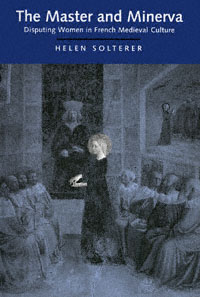 | Title: The master and Minerva: disputing women in French medieval culture Author: Solterer, Helen Published: University of California Press, 1995 Subjects: Literature | European Literature | Literary Theory and Criticism | Medieval Studies | Women's Studies | French Studies Publisher's Description: Can words do damage? For medieval culture, the answer was unambiguously yes. And as Helen Solterer contends, in French medieval culture the representation of women exemplified the use of injurious language.Solterer investigates the debates over women between masters and their disciples. Across a broad range of Old French literature to the early modern Querelle des femmes , she shows how the figure of the female respondent became an instrument for disputing the dominant models of representing women. The female respondent exploited the criterion of injurious language that so preoccupied medieval masters, and she charged master poets ethically and legally with libel. Solterer's work thus illuminates an early, decisive chapter in the history of defamation. [brief] Similar Items |
| 9. | 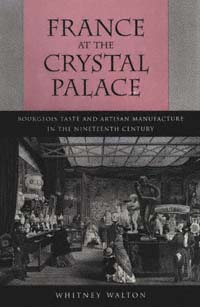 | Title: France at the Crystal Palace: bourgeois taste and artisan manufacture in the nineteenth century Author: Walton, Whitney Published: University of California Press, 1992 Subjects: History | European History | Women's Studies | French Studies Publisher's Description: Whitney Walton approaches the nineteenth-century French industrial development from a new perspective - that of consumption. She analyzes the French performance at the Crystal Palace Exhibition of 1851 to illustrate how bourgeois consumers influenced France's distinctive pattern of industrial development. She also demonstrates the importance of consumption and gender in class formation and reveals how women influenced industry in their role as consumers.Walton examines important consumer goods industries that have been rarely studied by historians, such as the manufacture of wallpaper, furniture, and bronze statues. Using archival sources on household possessions of the Parisian bourgeoisie as well as published works, she shows how consumers' taste for fashionable, artistic, well-made furnishings and apparel promoted a specialization unique to nineteenth-century France. [brief] Similar Items |
| 10. |  | Title: Printed poison: pamphlet propaganda, faction politics, and the public sphere in early Seventeenth-century France Author: Sawyer, Jeffrey K Published: University of California Press, 1991 Subjects: History | European History | Print Media | Politics | French Studies Publisher's Description: Combining a broad analysis of political culture with a particular focus on rhetoric and strategy, Jeffrey Sawyer analyzes the role of pamphlets in the political arena in seventeenth-century France. During the years 1614-1617 a series of conflicts occurred in France, resulting from the struggle for domination of Louis XIII's government. In response more than 1200 pamphlets - some printed in as many as eighteen editions - were produced and distributed. These pamphlets constituted the political press of the period, offering the only significant published source of news and commentary.Sawyer examines key aspects of the impact of pamphleteering: the composition of the targeted public and the ways in which pamphlets were designed to affect its various segments, the interaction of pamphlet printing and political action at the court and provincial levels, and the strong connection between pamphlet content and assumptions on the one hand and the evolution of the French state on the other. His analysis provides new and valuable insights into the rhetoric and practice of politics.Sawyer concludes that French political culture was shaped by the efforts of royal ministers to control political communication. The resulting distortions of public discourse facilitated a spectacular growth of royal power and monarchist ideology and influenced the subsequent history of French politics well into the Revolutionary era. [brief] Similar Items |
| 11. | 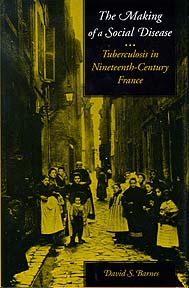 | Title: The making of a social disease;: tuberculosis in nineteenth-century France Author: Barnes, David S Published: University of California Press, 1995 Subjects: History | History and Philosophy of Science | Medicine | European History Publisher's Description: In this first English-language study of popular and scientific responses to tuberculosis in nineteenth-century France, David Barnes provides a much-needed historical perspective on a disease that is making an alarming comeback in the United States and Europe. Barnes argues that French perceptions of the disease - ranging from the early romantic image of a consumptive woman to the later view of a scourge spread by the poor - owed more to the power structures of nineteenth-century society than to medical science. By 1900, the war against tuberculosis had become a war against the dirty habits of the working class.Lucid and original, Barnes's study broadens our understanding of how and why societies assign moral meanings to deadly diseases. [brief] Similar Items |
| 12. | 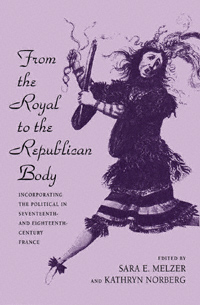 | Title: From the royal to the republican body: incorporating the political in seventeenth- and eighteenth-century France Author: Melzer, Sara E Published: University of California Press, 1998 Subjects: History | European History | French Studies | European Literature | Cinema and Performance Arts | Politics Publisher's Description: In this innovative volume, leading scholars examine the role of the body as a primary site of political signification in seventeenth- and eighteenth-century France. Some essays focus on the sacralization of the king's body through a gendered textual and visual rhetoric. Others show how the monarchy mastered subjects' minds by disciplining the body through dance, music, drama, art, and social rituals. The last essays in the volume focus on the unmaking of the king's body and the substitution of a new, republican body. Throughout, the authors explore how race and gender shaped the body politic under the Bourbons and during the Revolution. This compelling study expands our conception of state power and demonstrates that seemingly apolitical activities like the performing arts, dress and ritual, contribute to the state's hegemony. From the Royal to the Republican Body will be an essential resource for students and scholars of history, literature, music, dance and performance studies, gender studies, art history, and political theory. [brief] Similar Items |
| 13. | 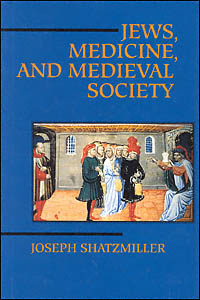 | Title: Jews, medicine, and medieval society Joseph Shatzmiller Author: Shatzmiller, Joseph Published: University of California Press, 1995 Subjects: Jewish Studies | Medieval History | European History | Medieval Studies | Medicine Publisher's Description: Jews were excluded from most professions in medieval, predominantly Christian Europe. Bigotry was widespread, yet Jews were accepted as doctors and surgeons, administering not only to other Jews but to Christians as well. Why did medieval Christians suspend their fear and suspicion of the Jews, allowing them to inspect their bodies, and even, at times, to determine their survival? What was the nature of the doctor-patient relationship? Did the law protect Jewish doctors in disputes over care and treatment?Joseph Shatzmiller explores these and other intriguing questions in the first full social history of the medieval Jewish doctor. Based on extensive archival research in Provence, Spain, and Italy, and a deep reading of the widely scattered literature, Shatzmiller examines the social and economic forces that allowed Jewish medical professionals to survive and thrive in thirteenth- and fourteenth-century Europe. His insights will prove fascinating to scholars and students of Judaica, medieval history, and the history of medicine. [brief] Similar Items |
| 14. |  | Title: Inheriting madness: professionalization and psychiatric knowledge in nineteenth-century France Author: Dowbiggin, Ian R Published: University of California Press, 1991 Subjects: History | European History | Sociology | Psychiatry Publisher's Description: Historically, one of the recurring arguments in psychiatry has been that heredity is the root cause of mental illness. In Inheriting Madness , Ian Dowbiggin traces the rise in popularity of hereditarianism in France during the second half of the nineteenth century to illuminate the nature and evolution of psychiatry during this period.In Dowbiggin's mind, this fondness for hereditarianism stemmed from the need to reconcile two counteracting factors. On the one hand, psychiatrists were attempting to expand their power and privileges by excluding other groups from the treatment of the mentally ill. On the other hand, medicine's failure to effectively diagnose, cure, and understand the causes of madness made it extremely difficult for psychiatrists to justify such an expansion. These two factors, Dowbiggin argues, shaped the way psychiatrists thought about insanity, encouraging them to adopt hereditarian ideas, such as the degeneracy theory, to explain why psychiatry had failed to meet expectations. Hereditarian theories, in turn, provided evidence of the need for psychiatrists to assume more authority, resources, and cultural influence. Inheriting Madness is a forceful reminder that psychiatric notions are deeply rooted in the social, political, and cultural history of the profession itself. At a time when genetic interpretations of mental disease are again in vogue, Dowbiggin demonstrates that these views are far from unprecedented, and that in fact they share remarkable similarities with earlier theories. A familiarity with the history of the psychiatric profession compels the author to ask whether or not public faith in it is warranted. [brief] Similar Items |
| 15. | 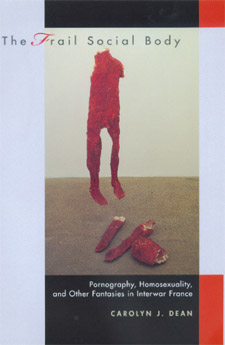 | Title: The frail social body: pornography, homosexuality, and other fantasies in interwar France Author: Dean, Carolyn J. (Carolyn Janice) 1960- Published: University of California Press, 2000 Subjects: History | Gender Studies | European History | Literary Theory and Criticism | French Studies Publisher's Description: Amid the national shame and subjugation following World War I in France, cultural critics there - journalists, novelists, doctors, and legislators, among others - worked to rehabilitate what was perceived as an unhealthy social body. Carolyn J. Dean shows how these critics attempted to reconstruct the “bodily integrity” of the nation by pointing to the dangers of homosexuality and pornography. Dean's provocative work demonstrates the importance of this concept of bodily integrity in France and shows how it was ultimately used to define first-class citizenship. Dean presents fresh historical material - including novels and medical treatises - to show how fantasies about the body-violating qualities of homosexuality and pornography informed social perceptions and political action. Although she focuses on the period from 1890 to 1945, Dean also establishes the relevance of these ideas to current preoccupations with pornography and sexuality in the United States. [brief] Similar Items |
| 16. | 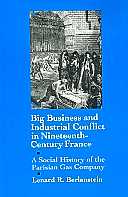 | Title: Big business and industrial conflict in nineteenth-century France: a social history of the Parisian Gas Company Author: Berlanstein, Lenard R Published: University of California Press, 1991 Subjects: History | European History | French Studies | Economics and Business | Technology and Society Publisher's Description: Founded in 1855, the Parisian Gas Company (PGC) quickly developed into one of France's greatest industrial enterprises, an exemplar of the new industrial capitalism that was beginning to transform the French economy. The PGC supplied at least half the coal gas consumed in France through the 1870s and became the city's single largest employer of clerical and factory labor. Representing a new form and scale of capitalistic endeavor, the firm's history illuminates the social tensions that accompanied the nation's industrialization and democratization.To study the company over its fifty-year life is to see industrializing France writ small. Using previously untapped company archives, Lenard R. Berlanstein has written a rich and detailed study that skillfully bridges the divide between business, social, and labor history. [brief] Similar Items |
| 17. |  | Title: Decadent enchantments: the revival of Gregorian chant at Solesmes Author: Bergeron, Katherine Published: University of California Press, 1998 Subjects: Music | Musicology | French Studies | European History Publisher's Description: The oldest written tradition of European music, the art we know as Gregorian chant, is seen from an entirely new perspective in Katherine Bergeron's engaging and literate study. Bergeron traces the history of the Gregorian revival from its Romantic origins in a community of French monks at Solesmes, whose founder hoped to rebuild the moral foundation of French culture on the ruins of the Benedictine order. She draws out the parallels between this longing for a lost liturgy and the postrevolutionary quest for lost monuments that fueled the French Gothic revival, a quest that produced the modern concept of "restoration."Bergeron follows the technological development of the Gregorian restoration over a seventy-year period as it passed from the private performances of a monastic choir into the public commodities of printed books, photographs, and Gramophone records. She discusses such issues as architectural restoration, the modern history of typography, the uncanny power of the photographic image, and the authority of recorded sound. She also shows the extent to which different media shaped the modern image of the ancient repertory, an image that gave rise to conflicting notions not only of musical performance but of the very idea of music history. [brief] Similar Items |
| 18. | 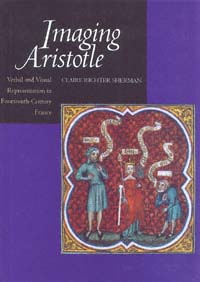 | Title: Imaging Aristotle: verbal and visual representation in fourteenth-century France Author: Sherman, Claire Richter Published: University of California Press, 1995 Subjects: Art | Art History | Medieval Studies Publisher's Description: Nicole Oresme's translation of Aristotle's Nicomachean Ethics, Politics, and Economics into French from Latin in the 1370s is the subject of Claire Sherman's stunningly illustrated book. Though both the text translations and their images have been studied separately, this is the first time they are published in their entirety and considered together.Intended for an audience of Charles V, his counselors, and high-ranking lay people, these manuscripts are significant for their linguistic and political implications, for moving Aristotle's work beyond clerical and university boundaries, and for reflecting the dynamics of monarchic control of French language and culture. Sherman shows the importance of Oresme's role as translator and book designer. She also explores the gender and class representations in the imagery, relating them not only to the views of Oresme and his audience but also to the contemporary secular culture. [brief] Similar Items |
| 19. | 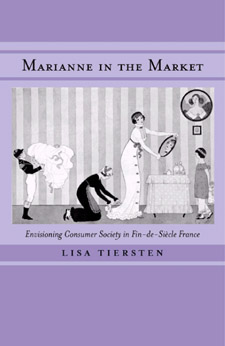 | Title: Marianne in the market: envisioning consumer society in fin-de-siècle France Author: Tiersten, Lisa 1959- Published: University of California Press, 2001 Subjects: European Studies | European History | Consumerism | French Studies | Women's Studies Publisher's Description: In the late nineteenth century, controversy over the social ramifications of the emerging consumer marketplace beset the industrialized nations of the West. In France, various commentators expressed concern that rampant commercialization threatened the republican ideal of civic-mindedness as well as the French reputation for good taste. The female bourgeois consumer was a particularly charged figure because she represented consumption run amok. Critics feared that the marketplace compromised her morality and aesthetic discernment, with dire repercussions for domestic life and public order. Marianne in the Market traces debates about the woman consumer to examine the complex encounter between the market and the republic in nineteenth-century France. It explores how agents of capitalism - advertisers, department store managers, fashion journalists, self-styled taste experts - addressed fears of consumerism through the forging of an aesthetics of the marketplace: a "marketplace modernism." In so doing, they constructed an image of the bourgeois woman as the solution to the problem of unrestrained, individualized, and irrational consumption. Commercial professionals used taste to civilize the market and to produce consumers who would preserve the French aesthetic patrimony. Tasteful consumption legitimized women's presence in the urban public and reconciled their roles as consumers with their domestic and civic responsibilities. A fascinating case study, Marianne in the Market builds on a wide range of sources such as the feminine press, decorating handbooks, exposition reports, advertising materials, novels, and etiquette books. Lisa Tiersten draws on these materials to make the compelling argument that market professionals used the allure of aesthetically informed consumerism to promote new models of the female consumer and the market in keeping with Republican ideals. [brief] Similar Items |
| 20. | 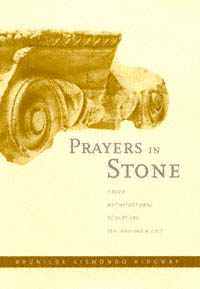 | Title: Prayers in stone: Greek architectural sculpture ca. 600-100 B.C.E Author: Ridgway, Brunilde Sismondo 1929- Published: University of California Press, 1999 Subjects: Classics | Art | Art and Architecture | Art History Publisher's Description: The meaning of architectural sculpture is essential to our understanding of ancient Greek culture. The embellishment of buildings was common for the ancient Greeks, and often provocative. Some ornamental sculpture was placed where, when the building was finished, no mortal eye could view it. And unlike much architectural ornamentation of other cultures, Greek sculpture was often integral to the building, not just as decoration, and could not be removed without affecting the integrity of the building structure. This book is the first comprehensive treatment of the significance of Greek architectural sculpture. Brunilde Sismondo Ridgway, a world-class authority on ancient Greek sculpture, provides a highly informative tour of many dimensions of Greek public buildings - especially temples, tombs, and treasuries - in a text that is at once lucid, accessible, and authoritative.Ridgway's pragmatism and common sense steer us tactfully and clearly through thickets of uncertainty and scholarly disagreement. She refers to a huge number of monuments, and documents her discussions with copious and up-to-date bibliographies. This book is sure to be acknowledged at once as the standard treatment of its important topic. [brief] Similar Items |